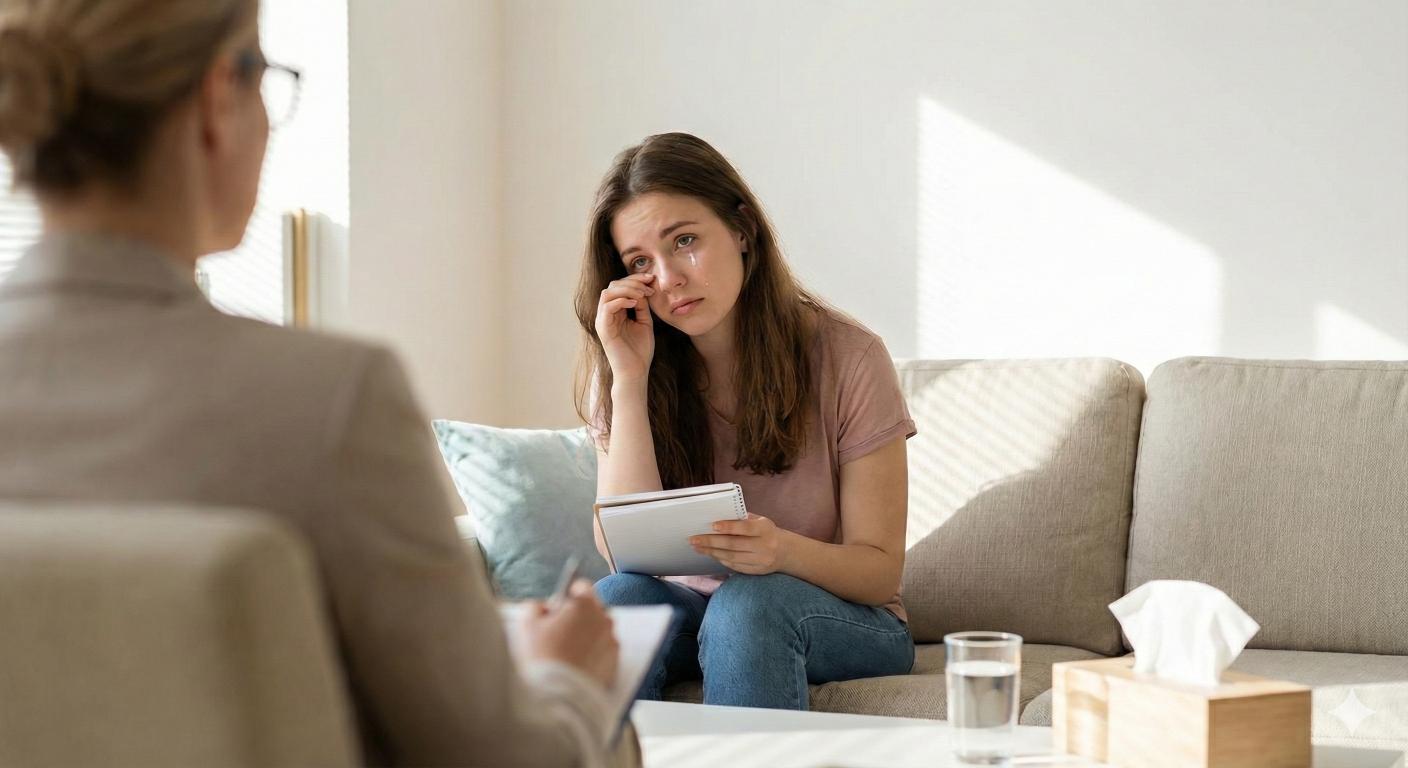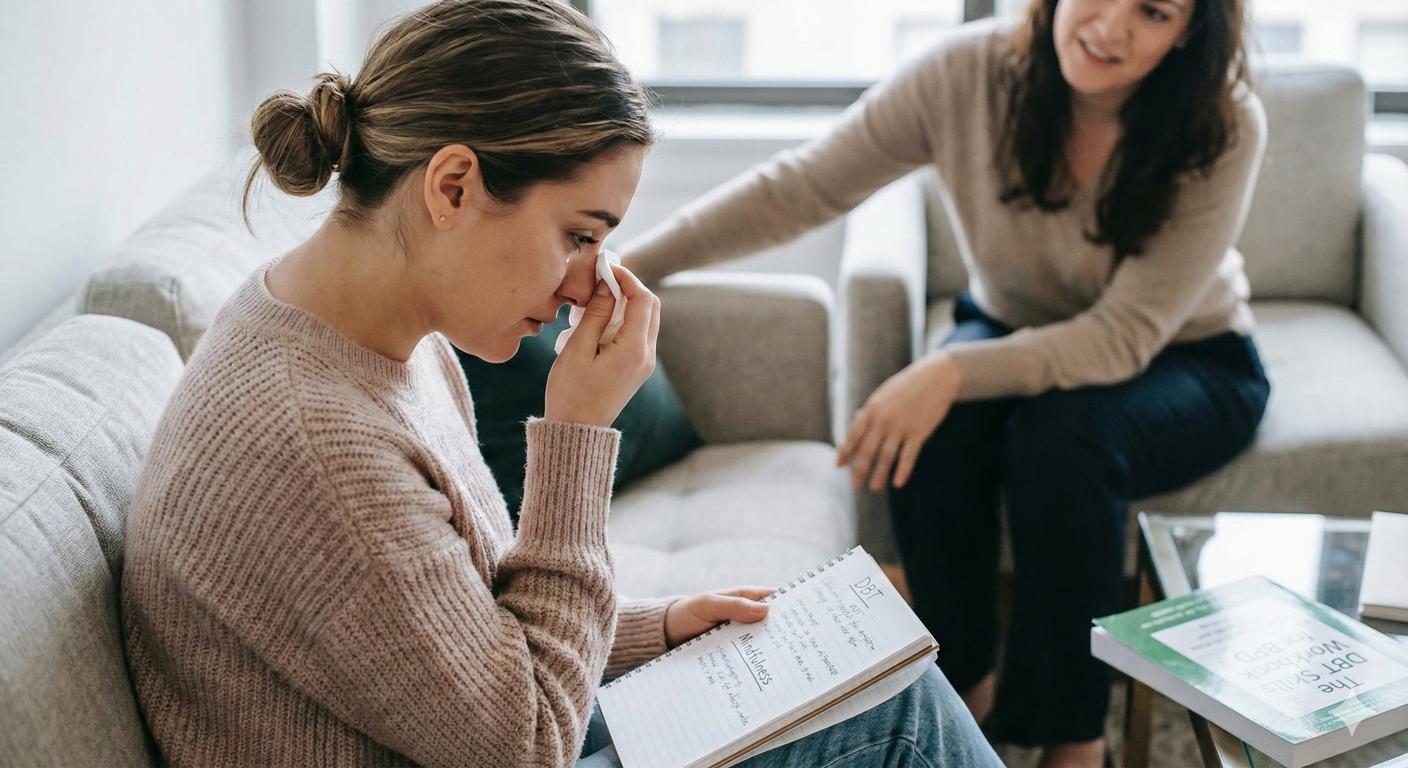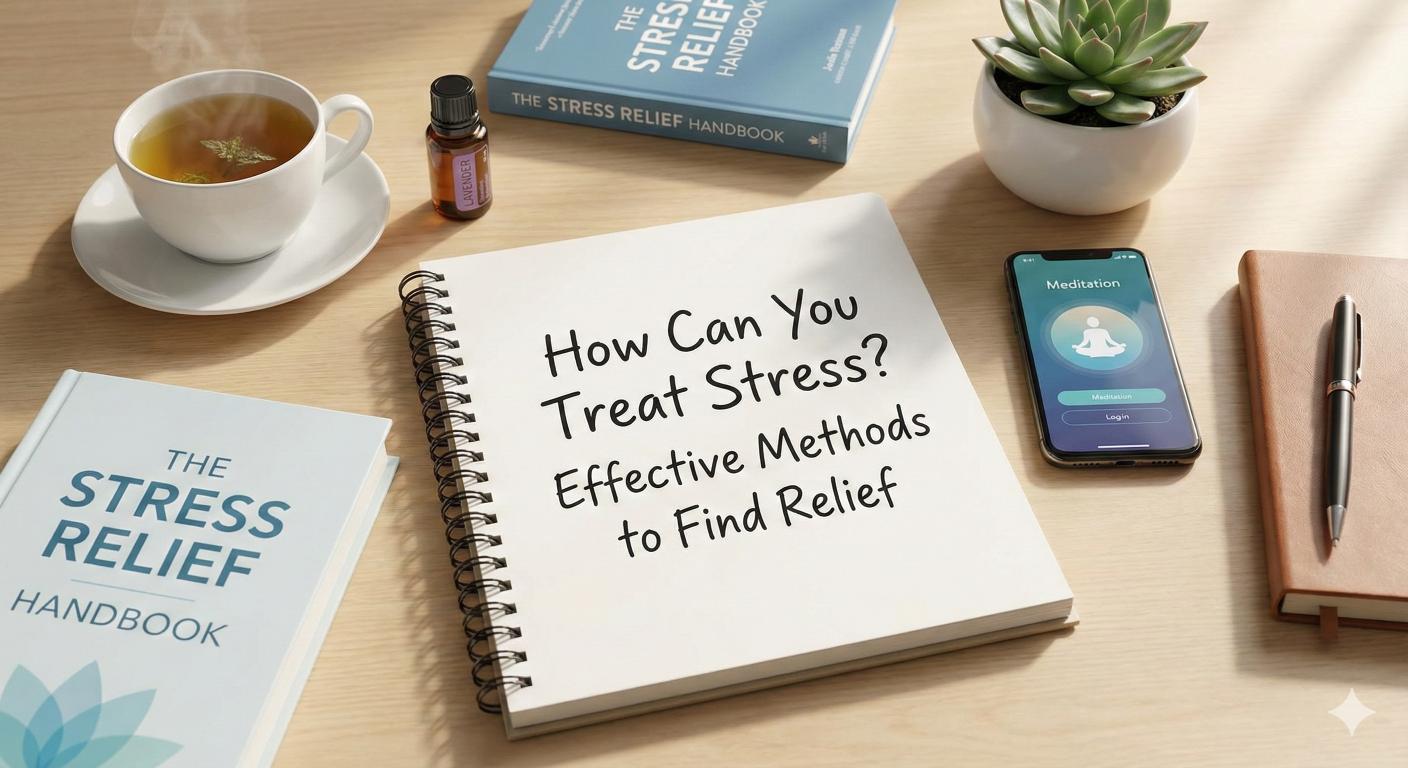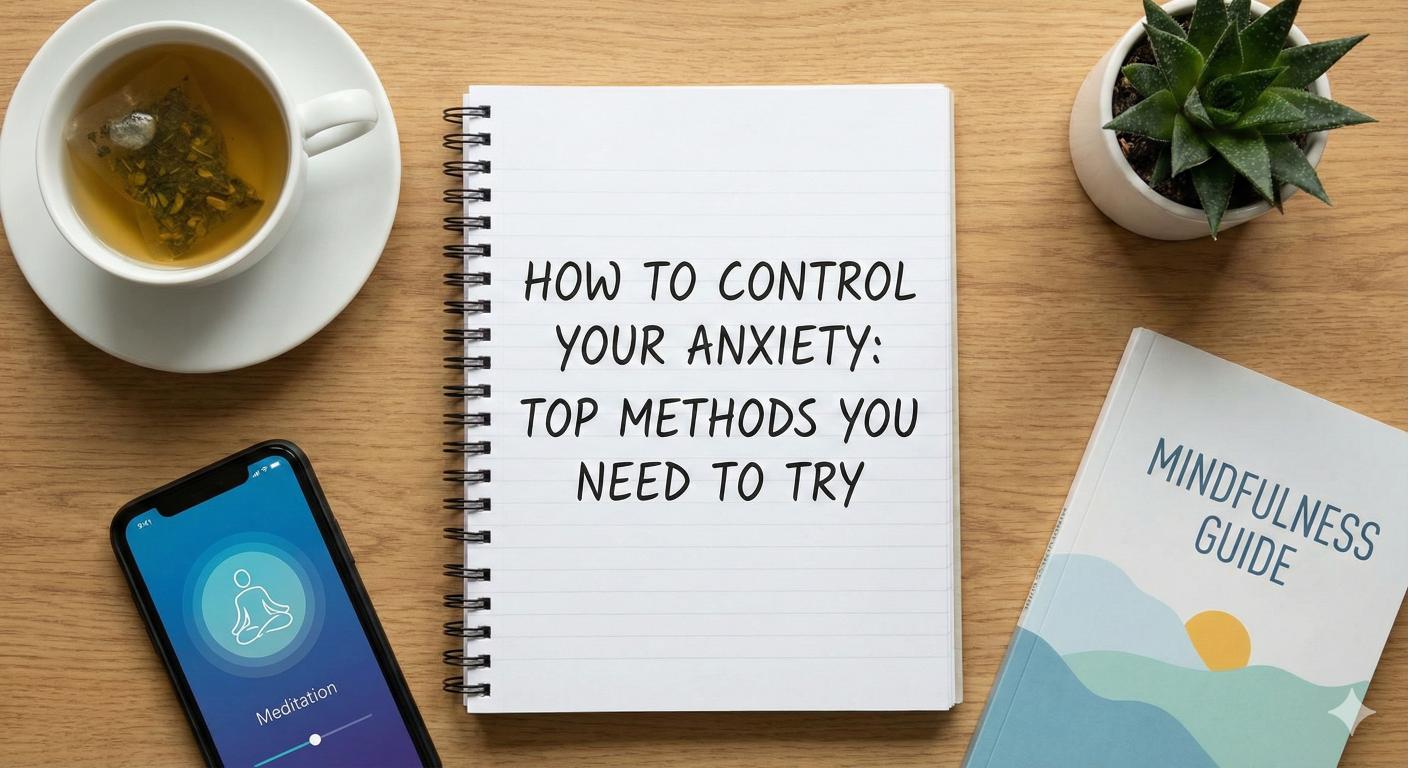The Science of Exposure Therapy for Anxiety
Discover exposure therapy for anxiety: how it works, techniques used, and its effectiveness in overcoming fears.

Understanding Exposure Therapy
Exposure therapy is a well-recognized technique utilized by mental health professionals to assist individuals in overcoming fears and anxieties. It involves controlled exposure to stimuli that provoke distress, allowing for gradual confrontation in a safe environment. This method is particularly effective for treating various anxiety disorders, including phobias and post-traumatic stress disorder (PTSD).

The Basics of Exposure Therapy
At its core, exposure therapy is a type of cognitive behavioral therapy (CBT) designed to help individuals confront their fears. According to the Cleveland Clinic, this approach enables individuals to attach new beliefs to feared objects and experiences. It encompasses various techniques, such as in vivo exposure (real-life situations), imaginal exposure (visualizing fears), and virtual reality exposure.
The process generally unfolds in stages:
Benefits of Exposure Therapy
Exposure therapy offers numerous advantages for individuals grappling with anxiety disorders. Some key benefits include:
BenefitDescriptionReduction of Anxiety SymptomsDecreased anxiety levels over time through confrontation of fears.Building Coping MechanismsDevelopment of effective strategies to handle anxiety.Increased Comfort with Fear ExperiencesEnhanced resilience and comfort in facing fears.
Exposure therapy is a versatile treatment method that can aid those affected by conditions such as social anxiety disorder, panic disorder, and obsessive-compulsive disorder (OCD) in addition to phobias and PTSD [2]. For more information about anxiety and its symptoms, visit our article on what is anxiety? understanding the basics.

Applications of Exposure Therapy
Exposure therapy is a specialized form of cognitive behavioral therapy that is widely used to treat various anxiety disorders. By gradually exposing individuals to their fears in a controlled environment, exposure therapy allows them to confront and manage these fears, leading to improved mental health outcomes.
Treating Phobias
Phobias represent intense, irrational fears of specific objects or situations, and exposure therapy is particularly effective for addressing them. Individuals undergoing exposure therapy can gradually face the source of their fear, leading to a reduction in anxiety levels over time. This method is beneficial for various specific phobias, such as fear of spiders, heights, or flying.
Phobia TypeTypical Treatment ApproachArachnophobia (fear of spiders)Gradual exposure to images, videos, and eventually live spidersAcrophobia (fear of heights)Exposure through VR environments or real-life experiences at increasing heightsAviophobia (fear of flying)Step-by-step exposure starting from discussing flying to taking short flights
Managing Social Anxiety
Social anxiety disorder is characterized by an intense fear of social interactions and situations. Exposure therapy can help individuals with this condition to gradually partake in social scenarios, ranging from speaking in small groups to participating in larger gatherings. By facing these scenarios progressively, they can build confidence and reduce their anxiety about being evaluated by others.
Social SituationExposure MethodSpeaking in front of a few friendsRole-play scenarios within therapy sessionsAttending social eventsGradual participation in community activities
Addressing PTSD
Post-traumatic stress disorder (PTSD) often results from experiencing or witnessing traumatic events. Exposure therapy is a crucial treatment option for PTSD, as it allows individuals to discuss and confront memories of the trauma in a safe setting. This therapeutic method helps reduce the symptoms of re-experience and avoidance, allowing patients to process the trauma effectively.
PTSD SymptomExposure Therapy TechniqueFlashbacksGradual narrative exposure to memories of the traumaAvoidance of remindersEncouragement to confront aspects related to the trauma step-by-step
Overcoming Specific Fears
Exposure therapy can address a variety of specific fears, including the fear of public speaking, driving, or other common anxiety-inducing scenarios. Regardless of the nature of the fear, the approach remains consistent: gradual exposure to the feared situation while employing coping strategies.
Specific FearExposure StrategyFear of public speakingStart with sharing thoughts in small groups, progressing to larger audiencesFear of drivingBegin with short rides in familiar areas before tackling busier routes
Exposure therapy is a proven intervention for various anxiety disorders, yielding significant improvements in symptoms and quality of life. For a deeper understanding of anxiety, check out our article on what is anxiety? understanding the basics.

Techniques Used in Exposure Therapy
Understanding the techniques utilized in exposure therapy is essential for recognizing how this therapeutic approach helps individuals cope with anxiety. This section highlights three primary techniques: gradual exposure, controlled environment, and therapeutic guidance.
Gradual Exposure
Gradual exposure is a fundamental technique in exposure therapy. It involves slowly and systematically confronting fears or anxieties in a controlled manner. Therapists may begin by exposing individuals to pictures of their feared objects or situations, progressively moving toward more direct forms of exposure, such as bringing the object closer or interacting with it.
The process usually follows a hierarchy, starting with the least anxiety-provoking stimuli and gradually increasing to more intense exposures. For instance, someone with a fear of dogs might first look at pictures of dogs, then observe dogs from a distance, and ultimately pet a dog.
Exposure LevelExample ActivityLevel 1Viewing pictures of dogsLevel 2Watching dogs from a distanceLevel 3Approaching a calm dogLevel 4Petting a dog
Controlled Environment
Creating a controlled environment is crucial during exposure therapy. This ensures that the exposure takes place in a safe setting, so individuals can face their fears without external stressors that may escalate anxiety. The therapist carefully manages the environment, allowing for safe interactions with feared stimuli and providing immediate support if anxiety becomes overwhelming.
This controlled setting also allows therapists to gradually intensify exposure techniques as clients become more comfortable. For example, in a moderate environment, a therapist might introduce a simulated scenario involving the feared object, facilitating real-time responses while ensuring the individual's safety.
Therapeutic Guidance
Therapeutic guidance is an integral component of exposure therapy. Throughout the exposure process, therapists help individuals identify and manage fear responses, teaching coping strategies to handle anxiety effectively.
Therapists encourage clients to express their feelings and thoughts during sessions, fostering a supportive atmosphere that allows for exploration of fears. This element of guidance aids in reinforcing positive behaviors and responses, contributing significantly to the therapy's overall effectiveness.
Clients learn techniques for managing their anxieties, which can include deep-breathing exercises, mindfulness strategies, or cognitive restructuring to challenge negative thoughts related to their fears.
Implementing these techniques in exposure therapy addresses anxiety and empowers individuals to confront and manage their fears effectively. For more information on anxiety symptoms, visit what is anxiety? understanding the basics.
Effectiveness of Exposure Therapy
Research Studies
Numerous research studies underscore the effectiveness of exposure therapy for anxiety. Particularly impactful is its application in treating phobias, post-traumatic stress disorder (PTSD), and other anxiety-related conditions. According to Healthline, extensive studies demonstrate that this therapy is particularly beneficial in alleviating symptoms associated with various anxiety disorders.
Key findings highlight the effectiveness of exposure therapy across multiple anxiety types, including:
Type of AnxietyEffectivenessPhobiasHighPTSDHighGeneral Anxiety DisorderModerateSocial Anxiety DisorderModerate
Research indicates that exposure therapy can aid individuals in managing their symptoms effectively, allowing for improved daily functioning and overall mental health well-being.
Success Rates
Success rates for exposure therapy vary depending on the specific anxiety disorder being treated and individual differences among patients. However, overall, it is regarded as an efficacious treatment option. For instance, studies suggest that approximately 60-90% of individuals with specific phobias experience significant improvements following exposure therapy.
A summary of success rates for different applications of exposure therapy may include:
Anxiety DisorderSuccess Rate (%)Specific Phobias60 - 90PTSD70 - 80Social Anxiety Disorder60 - 70Generalized Anxiety Disorder50 - 65
Exposure therapy is a robust treatment method, supported by substantial research and data, particularly for those struggling with phobias and other anxiety disorders. Individuals seeking assistance may also consider complementary treatments such as cognitive-behavioral therapy (CBT) or mindfulness-based stress reduction (MBSR) for optimal results.
Safety Measures in Exposure Therapy
Ensuring the safety and effectiveness of exposure therapy is crucial for individuals undergoing treatment for anxiety. Two primary safety measures include professional supervision and methods for ensuring effectiveness throughout the therapeutic process.
Professional Supervision
Exposure therapy is recommended to be conducted under the guidance of a trained professional, such as a therapist, psychologist, or psychiatrist. This professional supervision helps to ensure that the therapy is effective and minimizes risks involved in addressing anxiety and fear responses. Without professional oversight, individuals may inadvertently escalate their fears or experience increased trauma [1].
A qualified therapist creates a safe environment, tailored to each individual's needs, while guiding them through the exposure process. This helps to foster a feeling of safety, which is essential for successful therapy.
Ensuring Effectiveness
To maximize the benefits of exposure therapy, it's essential that it is conducted in a graded manner. This means that therapists emphasize intentional confrontation of feared stimuli through repeated exposure over time. The gradual increase in the exposure intensity helps to build tolerance for fear and decrease overall anxiety levels [3].
Moreover, exposure therapy aims to modify the pathological fear structure by activating it and then providing new information to challenge unrealistic associations tied to the fear. This structured approach can involve different forms of exposure, such as imaginal, in vivo, or interoceptive.
A systematic approach combined with professional support ensures that therapy sessions are not only safe but also directed toward achieving the best possible outcomes for individuals dealing with anxiety disorders. For more information on anxiety disorders and treatment options, see our articles on what is anxiety? understanding the basics and cognitive-behavioral therapy (cbt) for anxiety disorders.
Duration and Progress in Exposure Therapy
The duration and progress of exposure therapy can greatly vary depending on individual circumstances and specific anxiety disorders. Understanding how personal progression and session variability influence the overall effectiveness of this therapeutic approach is crucial.
Individual Progress
Every person responds differently to exposure therapy, and their progress can be influenced by several factors, including the intensity of their fears, their previous experiences, and their commitment to the process. It is common for exposure therapy to be conducted in a graded fashion, allowing individuals to confront their fears step by step.
The length of exposure therapy typically varies based on the individual’s comfort level and the nature of the fear being addressed. For some, only a few sessions may be necessary to manage their anxiety effectively, while others may need multiple sessions to see significant improvements [2]. The table below illustrates possible session requirements based on individual progress:
Individual Progress LevelEstimated Sessions NeededLow Intensity Fears3 - 5 sessionsModerate Intensity Fears6 - 10 sessionsHigh Intensity Fears (e.g., PTSD)10+ sessions
Therapists utilize continuous assessment to adapt the therapy based on the individual's comfort and progress.
Session Variability
Session variability is another important aspect of exposure therapy. Some individuals may experience breakthroughs in a single session, while others might require a more sustained effort to confront their fears. Therapeutic techniques can include progressively increasing the level of exposure, moving from milder stimuli to more intense ones [2].
Additionally, the frequency of sessions can impact progress. Regular sessions may help maintain momentum, while extended gaps could lead to a resurgence of anxiety. Therefore, therapists often recommend scheduling sessions consistently, which assists in reinforcing coping strategies learned during therapy.
Ultimately, exposure therapy aims to reduce anxiety symptoms and improve coping skills, often achieving remarkable success rates, particularly for specific phobias where studies indicate it helps over 90% of participants who engage with the therapy. Individuals seeking help for anxiety can explore further methods, including cognitive-behavioral therapy (CBT) for anxiety disorders or mindfulness-based stress reduction (MBSR) for anxiety.
References
[2]:
[3]:
[4]:
More Resources
A team ready to start your journey.
Get in touch — today.
We are a safe space – a haven for exceptional individuals to receive discreet, personalized, in-person treatment and care.
.avif)










